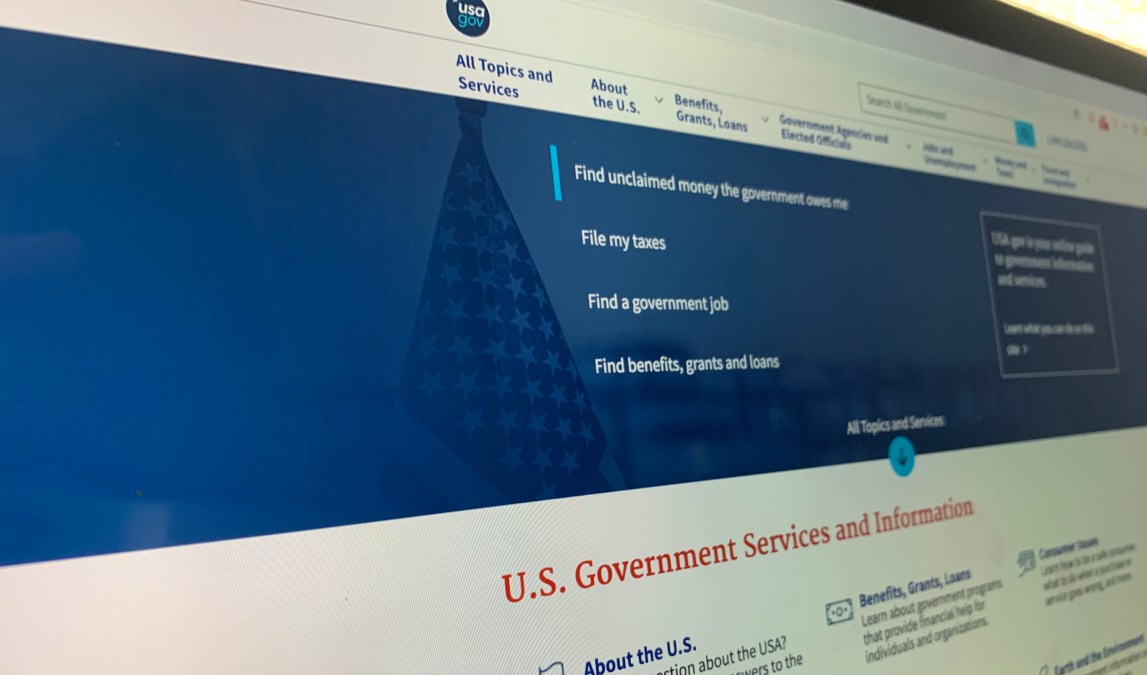Digital service migration to USA.gov: ‘a step backward’ or long overdue?

For more than two decades, USA.gov has served as an entry point for users searching for information about the federal government, with several satellite sites existing in its orbit that provide other resources to the public. This month, that approach will begin to change — a move that has drawn mixed reactions from former government IT officials.
The most visible representation of this transition is the shuttering of Benefits.gov, whose responsibilities will be absorbed by USA.gov. Mark Forman, the former administrator of the White House Office of E-Government and IT, said he believes the change is “really a step backward.”
“Everything’s unique … to a citizen’s or person’s situation and the state that they live in when they need access to these benefits programs,” said Forman, the first person to serve in the job that would become known as federal CIO. Citizens “know government is complicated, and they want the use of the web and today’s digital technologies to simplify that interface, not make it a pretty bunch of silos, which is essentially what happened here.”
The incorporation of standalone government websites into USA.gov is part of the General Services Administration’s compliance with President Joe Biden’s 2021 executive order on customer experience and service delivery. The order states that the GSA’s administrator must consolidate content from Benefits.gov and other “appropriate” websites, such as Grants.gov, and move the services to USA.gov.
Suzette Kent, federal CIO for two-and-a-half years of the Trump administration, said the change makes sense: designating USA.gov as the one-stop-shop for federal digital services should allay confusion among users and help the government more efficiently deliver assistance, she said.
But Forman isn’t so sure that the 2021 order requires a restructuring of Benefits.gov. He interpreted the CX executive order as an instruction to “use life events and build upon Benefits.gov so that you could get an integrated view for your life event, as opposed to having to figure out which program can I apply for.”
The new benefit finder tool, which is live on USA.gov, offers a simple landing page where individuals can apply filters (such as “education,” “welfare and cash assistance,” and more) to get results for potentially relevant benefits. Benefits.gov, however, walked individuals through a questionnaire to narrow down applicable resources.
Benefits.gov has operated by integrating relevant benefits from the federal government and the state government according to where an individual lives. USA.gov currently does not list that its absorption of Benefits.gov includes the state-specific filtration of relevant benefit programs.
“That’s the silo problem that you now, as a citizen, have to figure out by going silo to silo” or “benefit by benefit category,” Forman said.
“Each agency has a strong parochial interest, and their vendor community has a strong interest in maintaining these silos,” he added. “It’s very difficult to create an interagency team and develop the solution that cuts across the silos.”
Benefits.gov, a 22-year-old website, was started as part of an “early e-Gov initiative” that served over 220 million people and increased access to more than 1,100 government benefits, according to the site’s closure announcement.
Earl Warrington, a longtime former GSA director and IT leader, said that the branding of Benefits.gov is associated with “good customer experience” and hopes that the responsibilities absorbed by USA.gov do not lose those processes.
“The e-Gov mantra was all about CX/CI and customer experience, and the idea was that we don’t want to lose that type of integrity and we certainly want to maintain as much transparency as possible in the whole process,” Warrington said. “I think [the move] is the right decision; it’s just how [the GSA will] approach it, how they make it, how they promote it.”
Regardless of the approach, Kent emphasized the need for funding support for the sponsoring agency, which is GSA in this case.
But Kent said other agencies also need funding to “integrate or cooperate with GSA for USA.gov.” She referred to the shared services environment, offering the example that “sometimes an agency supports a set of functions but … they can’t necessarily change the pricing for what they ask from other agencies.”
Kent warned against a supporting agency not sustaining continuous enhancements for a service delivery initiative for various reasons, including budgetary constraints. She said the agency supporting the portal needs proper resourcing for both funding and support mechanisms, such as staffing, customer service and issue resolution.
“Very often, when you try to get to the crux of what’s happening, it’s because whoever’s supporting it doesn’t necessarily have the funding or the resources or people to keep a pace of enhancements that others might want,” Kent said.






